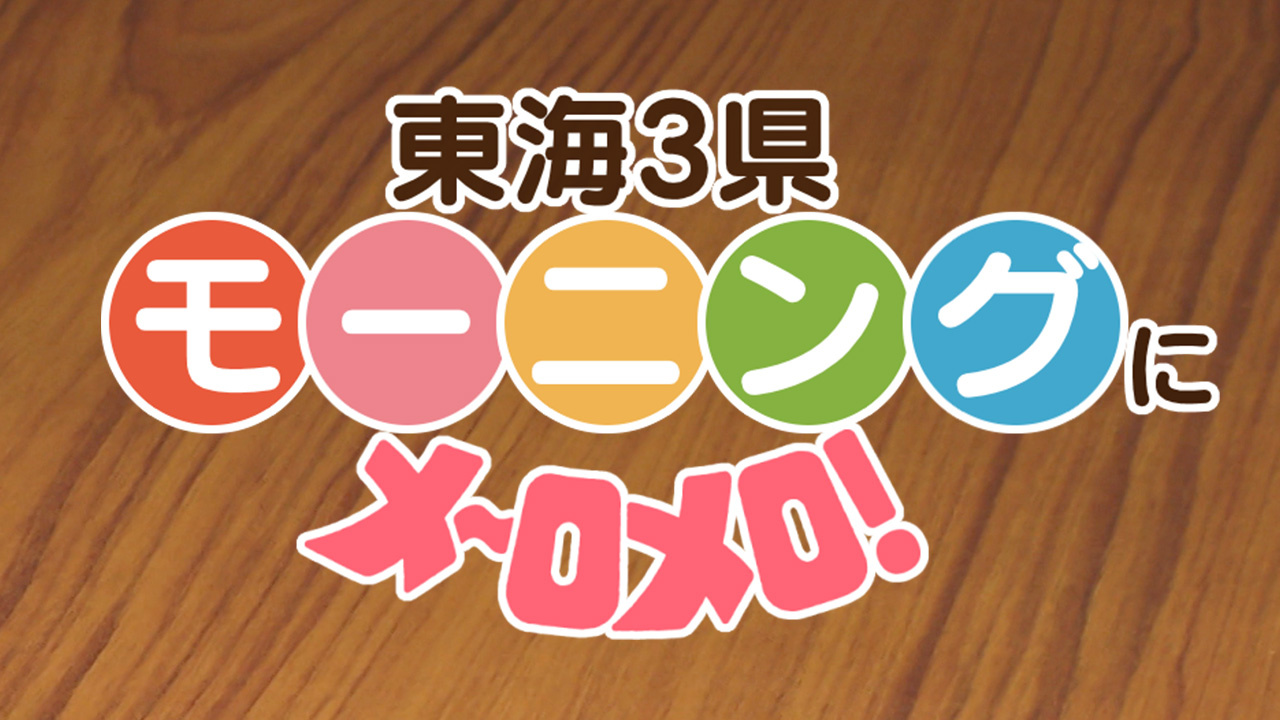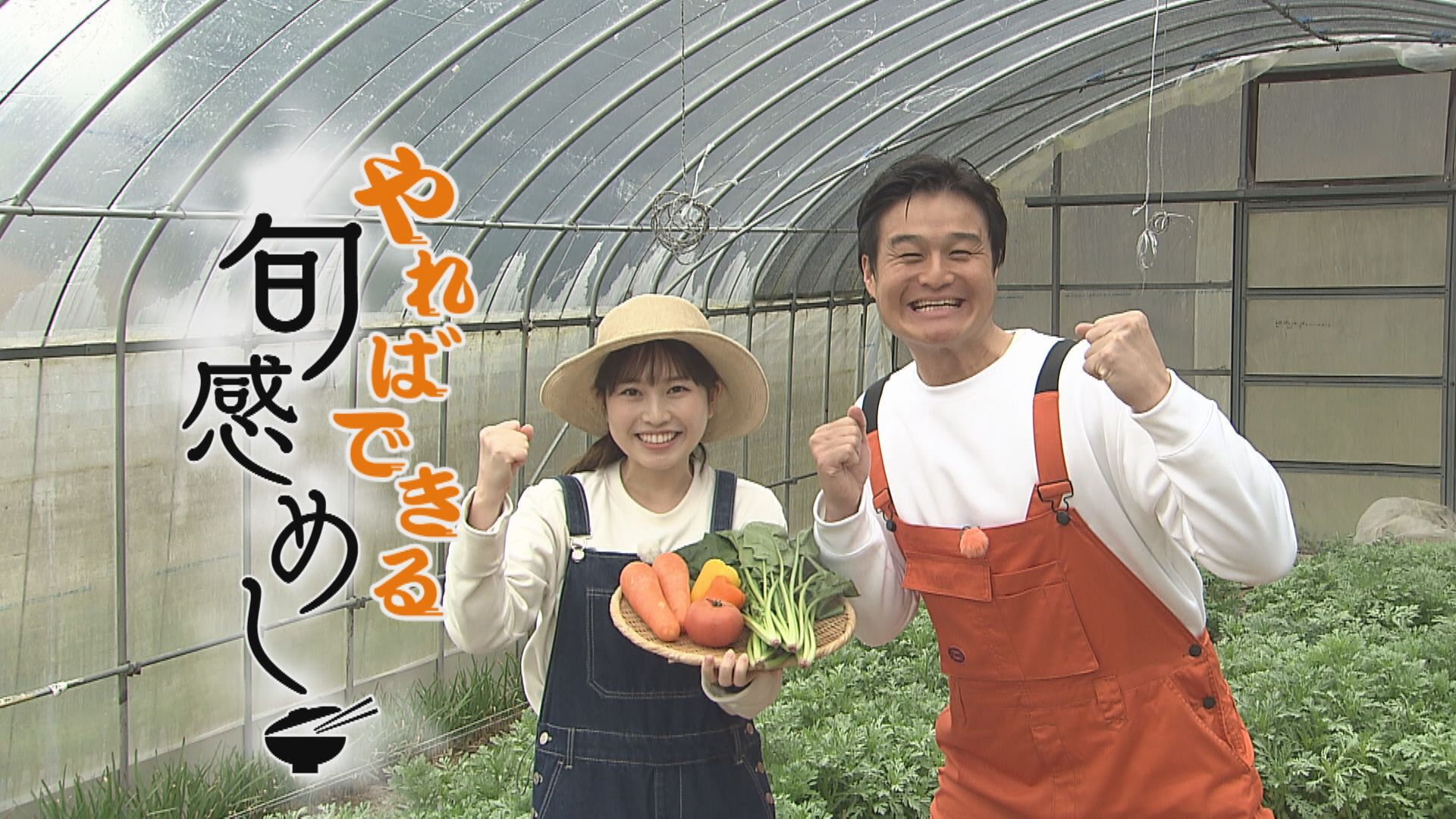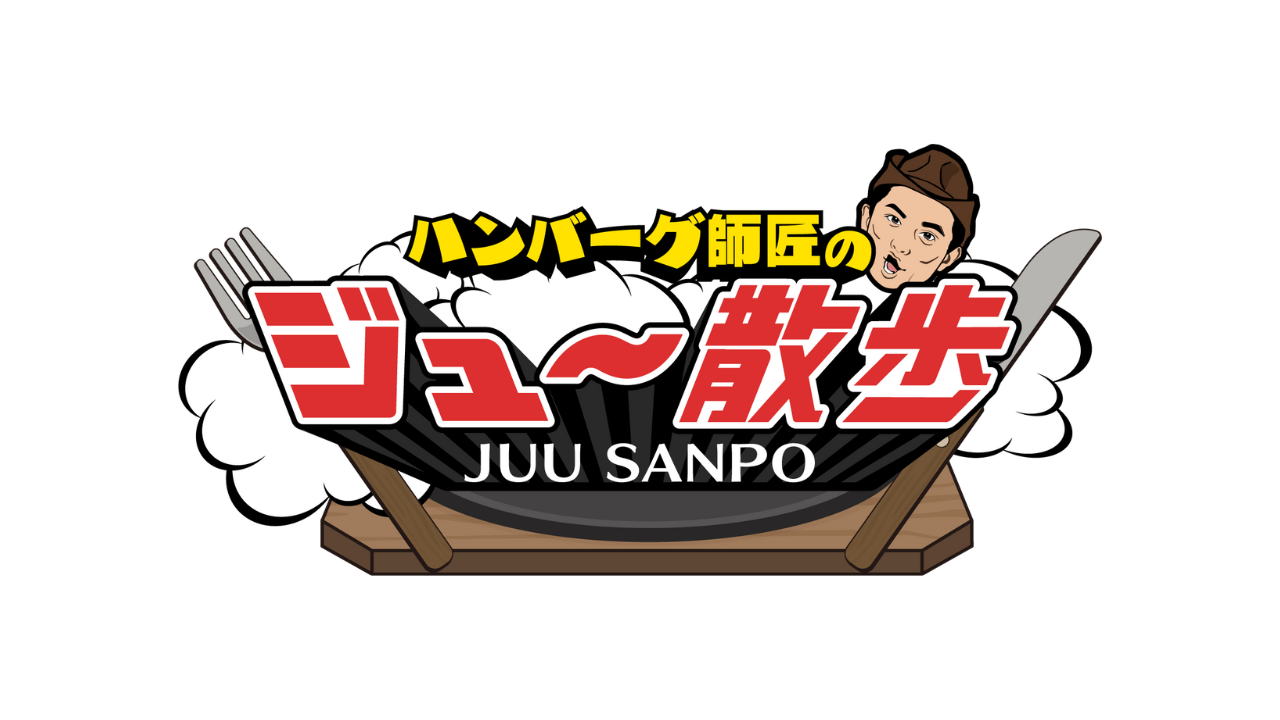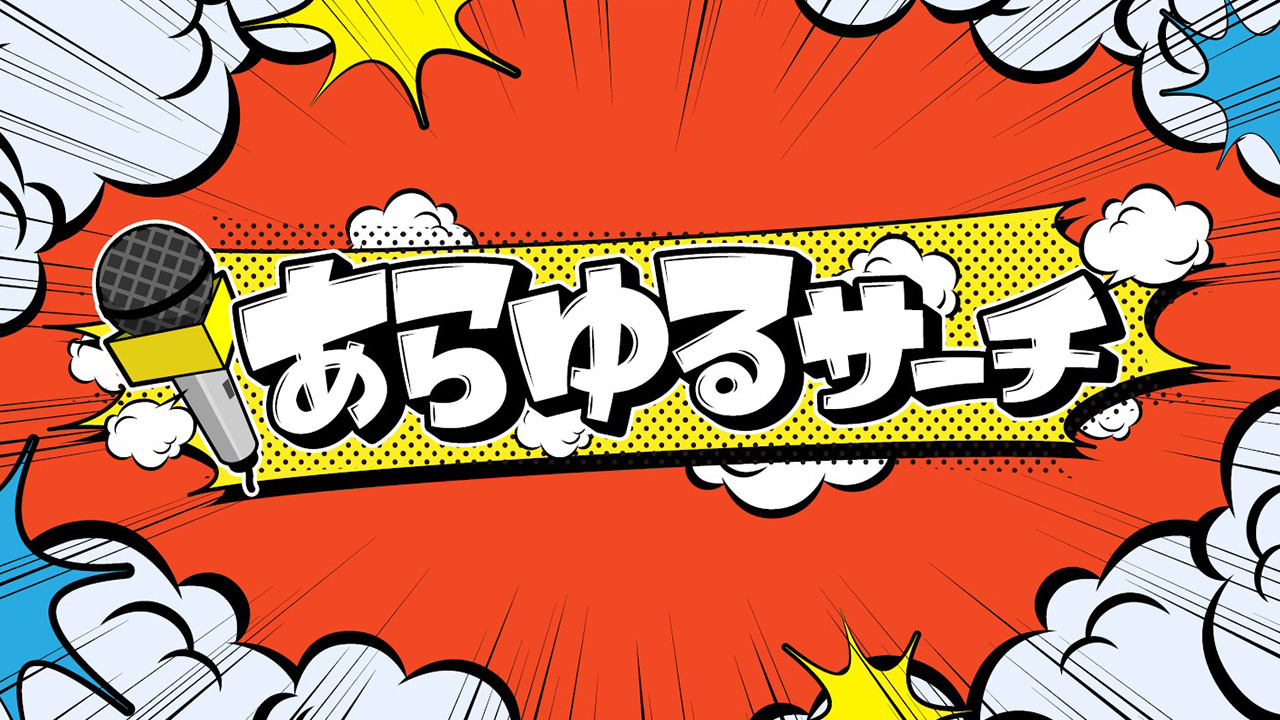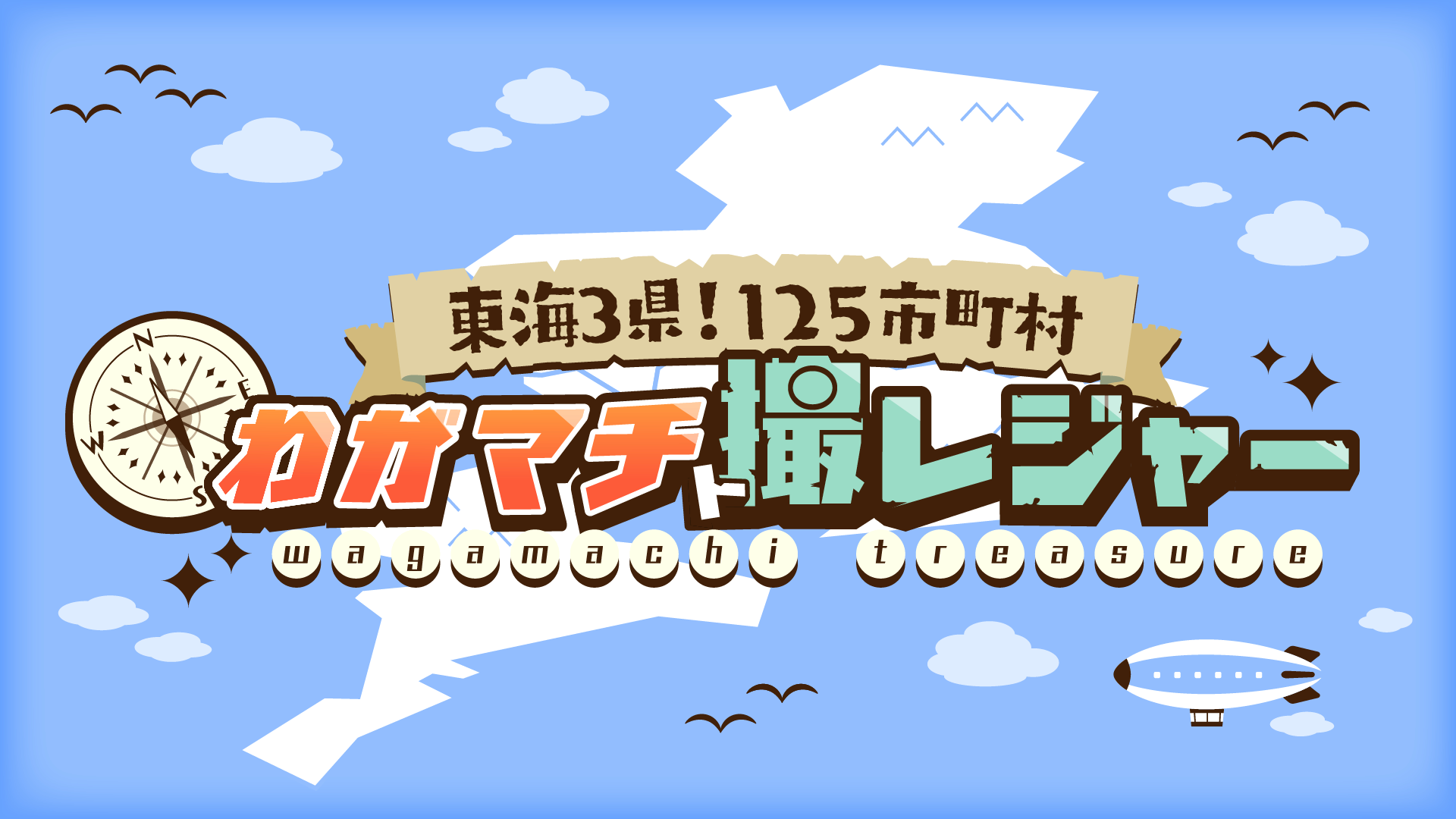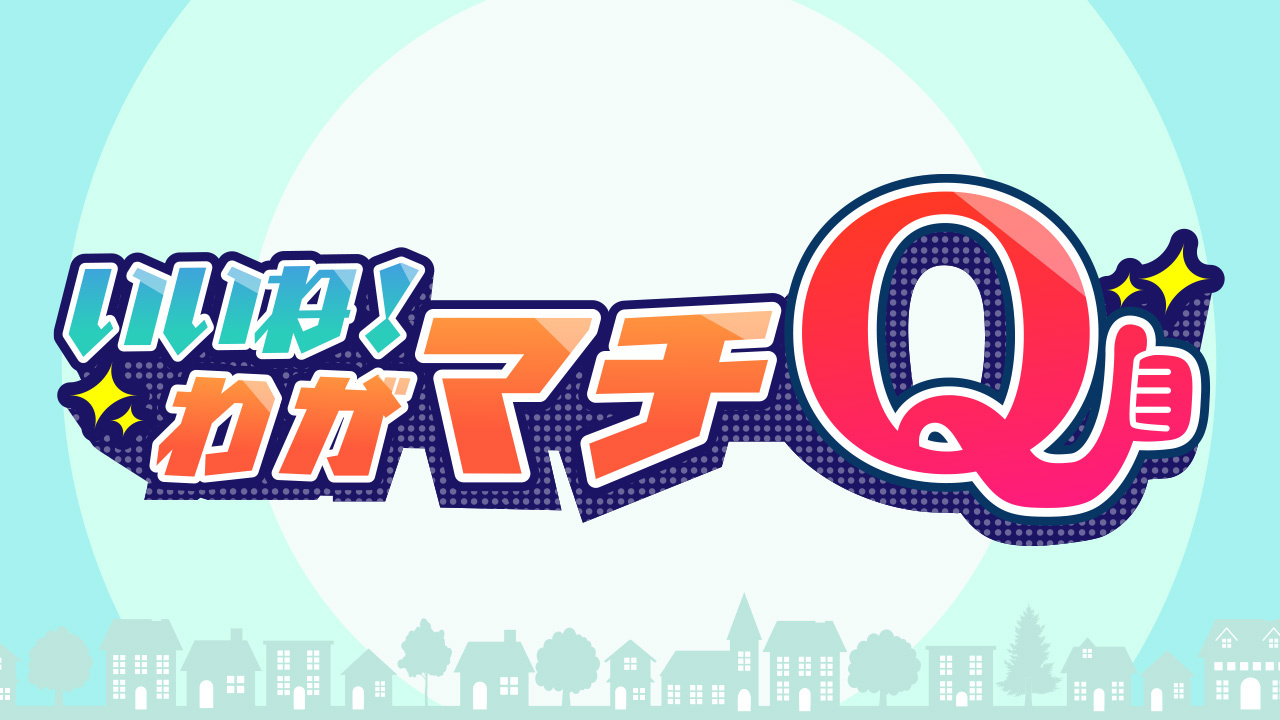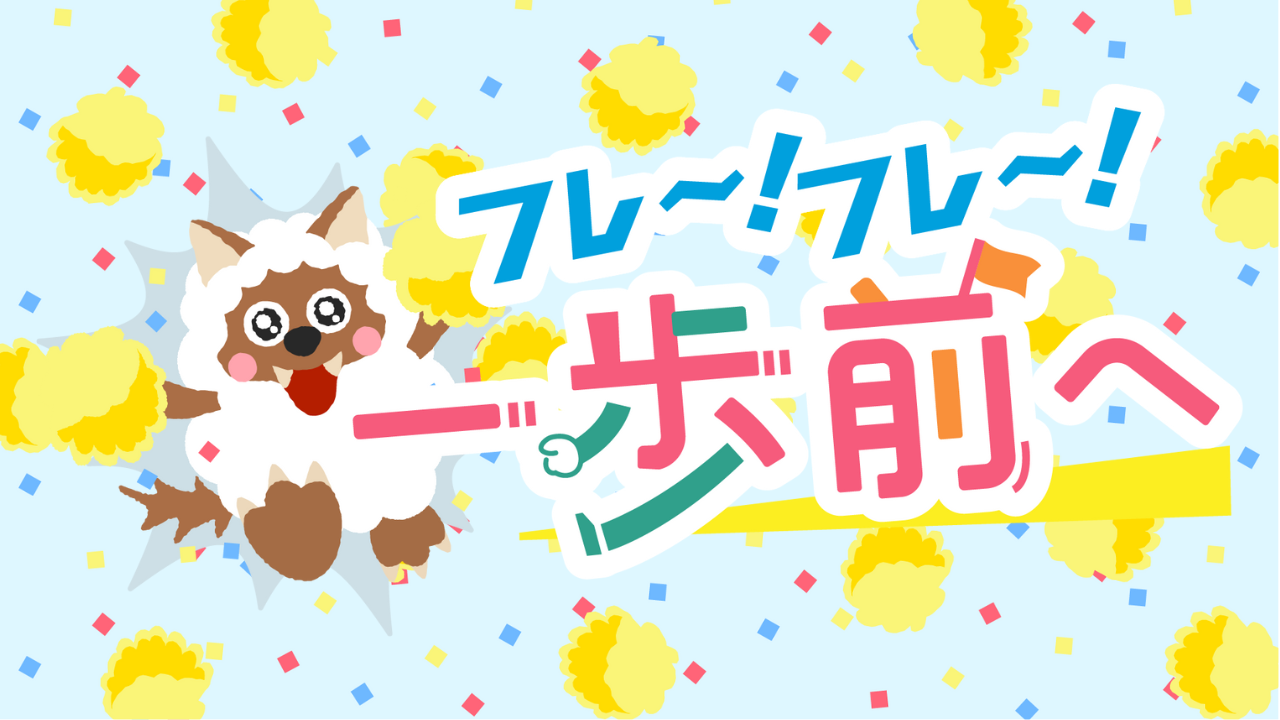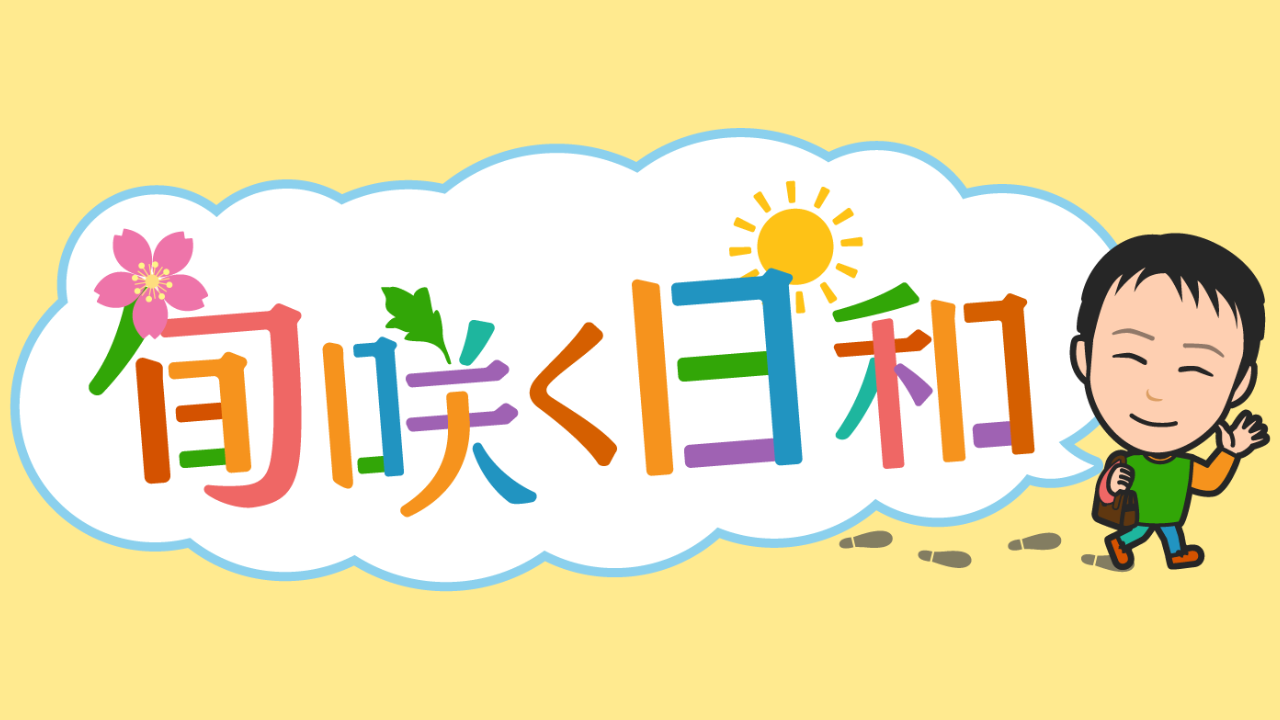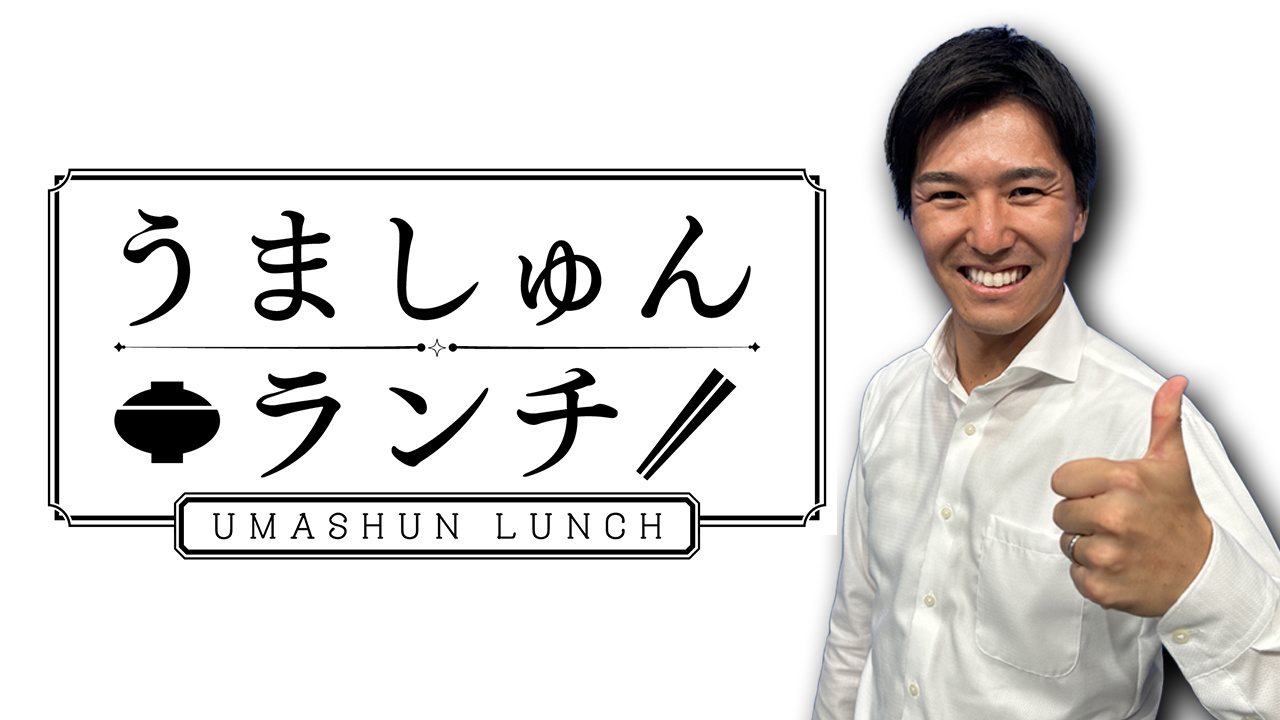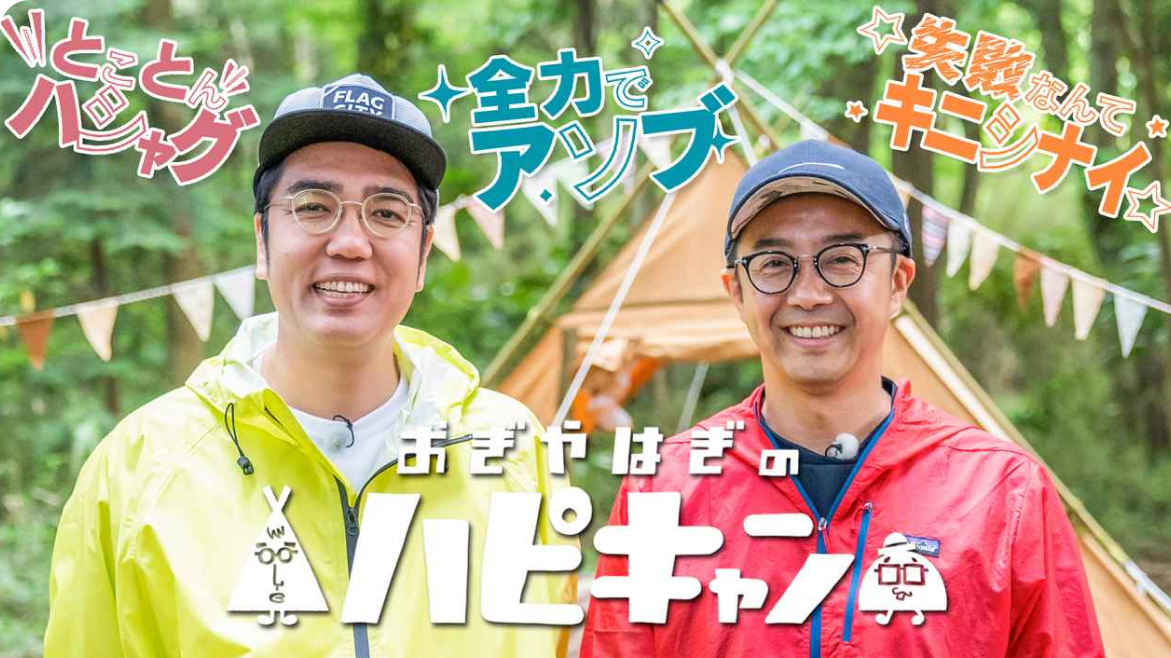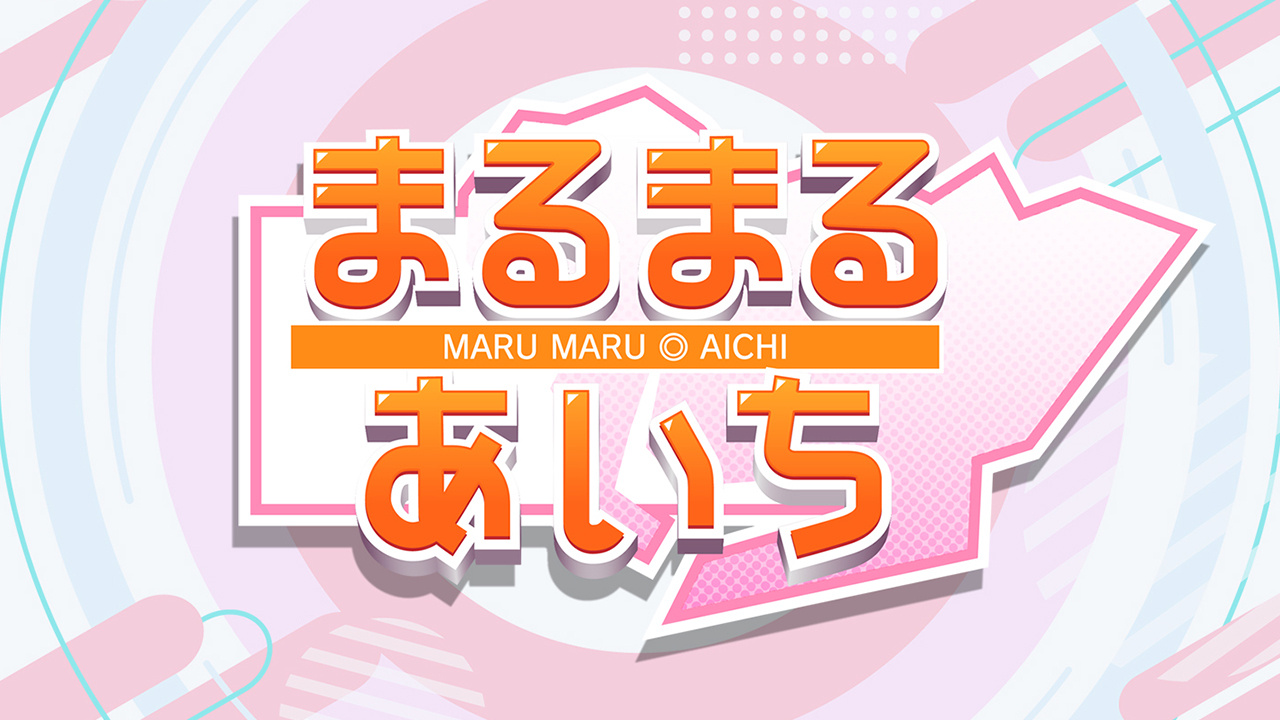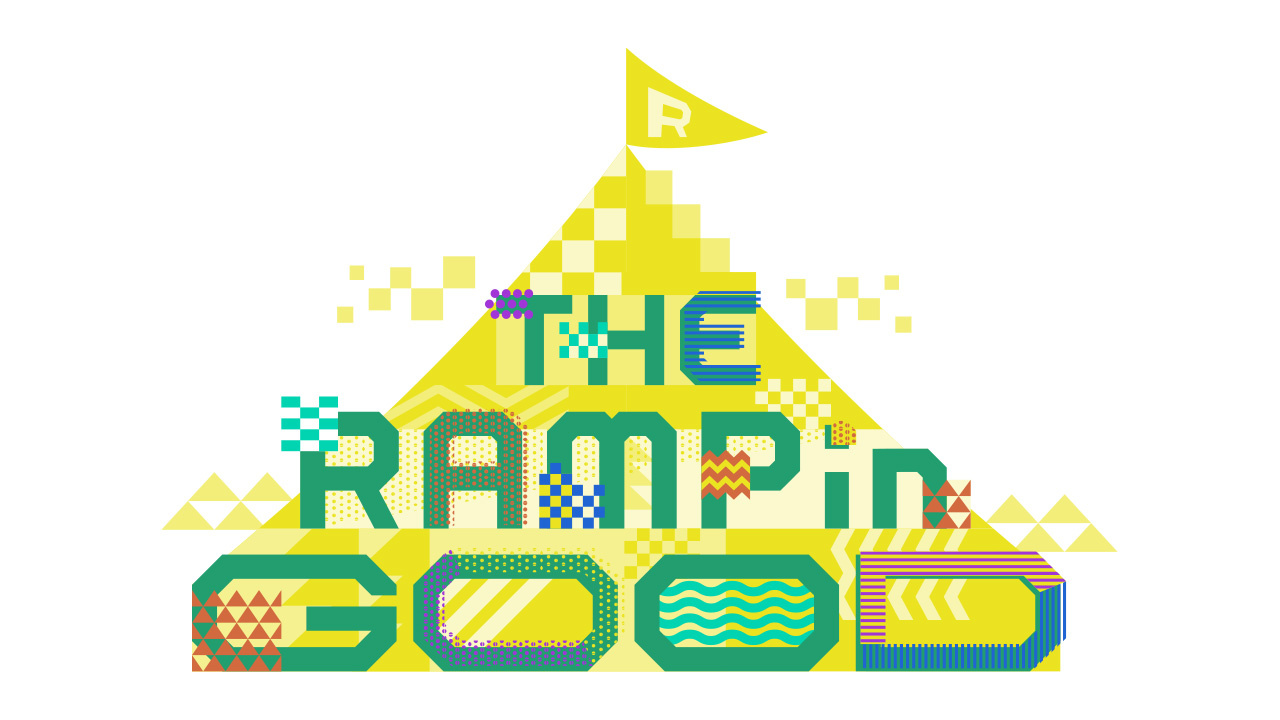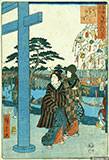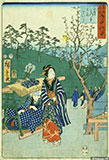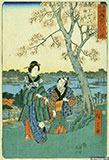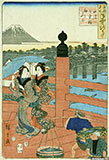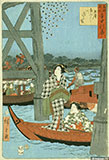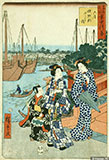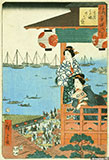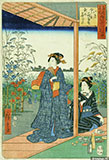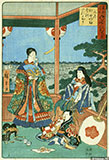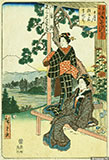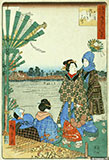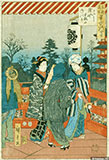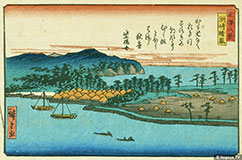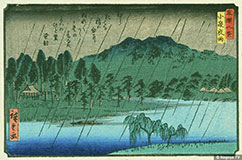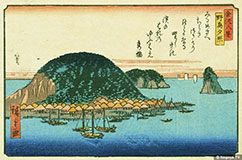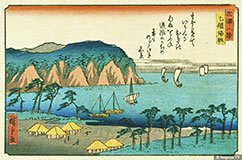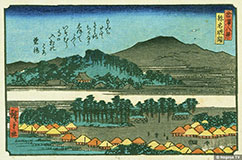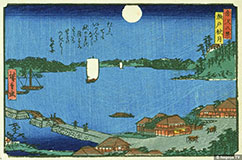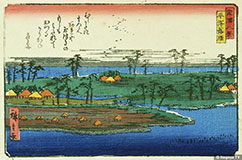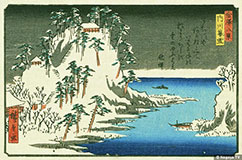歌川広重 ~その一~ 展示場
Room of Hiroshige Utagawa Vol.1
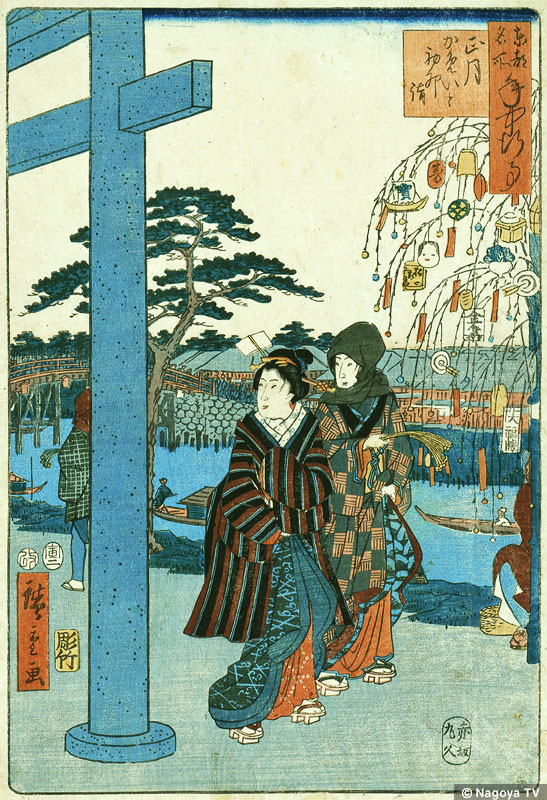
1.東都名所年中行事 正月(かめいと初卯詣)
New years (the first shrine visit at Kameido), from the series: "Annual events and sights of interest in Edo"
『東都名所年中行事』は、江戸の名所と年中行事や四季の名物を組み合わせた揃物。とはいえ、主人公はそこに登場する女性たちである。正月は亀戸天神 の初詣である
"Annual Events and Sights of Interest in Edo"
is a collection of sights of interest, annual events, and the four seasons in Edo.
But the main characters are the women that appear in the print. People go to Kameido Tenjin Shrine on New Years for the first shrine visit of the year.
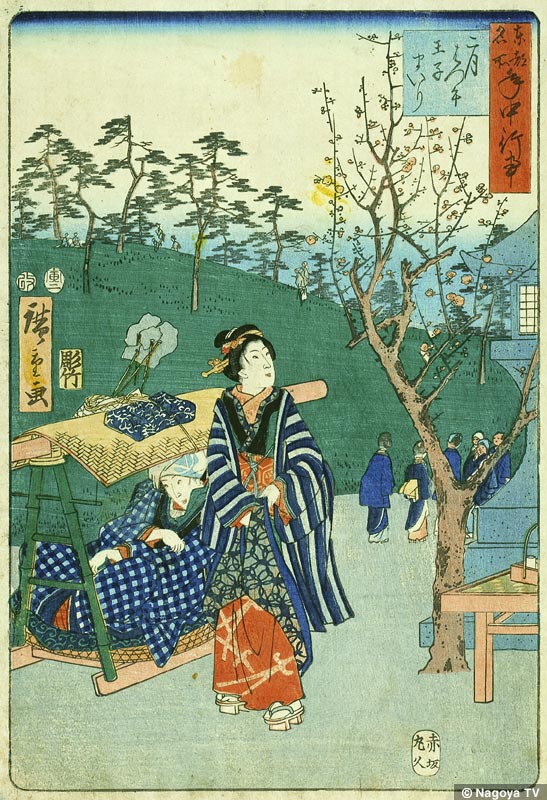
2.東都名所年中行事 二月(はつ午王子まいり)
February (Shrine visit to Oji on the first day of the horse), from the series: "Annual events and sights of interest in Edo"
2月の最初の午(うま)の日に稲荷神社に詣でること。女性たちが王子(東京都北区内)稲荷に詣でている。咲き始めた梅に目をやっている。
The first day of the horse in February, which was considered bad luck, was a day when one would pay a visit to Inari Shrine.
The women are paying a visit to Oji (In the Kita district of Tokyo) Inari. They are looking at plum blossoms that have begun to bloom.
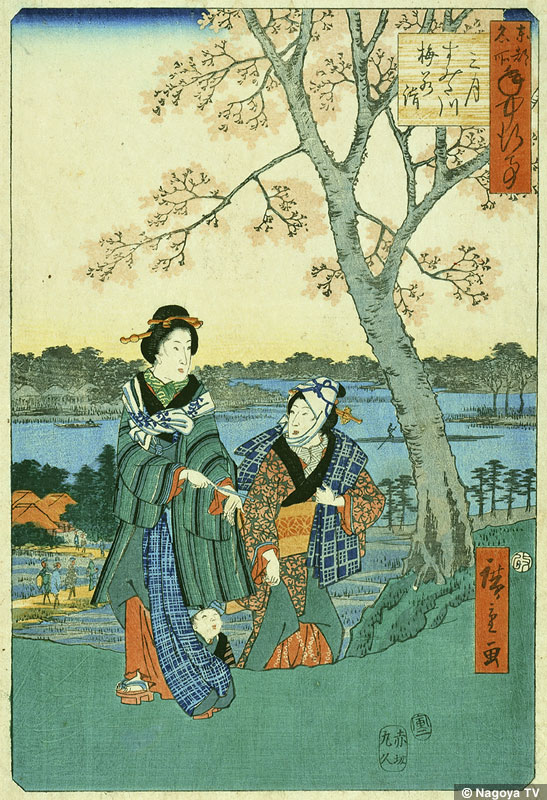
3.東都名所年中行事 三月(すみた川梅若詣)
March (Visiting the Umewaka mound along the Sumidagawa), from the series: "Annual events and sights of interest in Edo"
隅田川沿いにある本母寺(もくぼじ)の梅若塚詣である。ここは謡曲「隅田川」に出てくる梅若丸(東国に 下って隅田川町岬で病死したという)にちなんだ梅の名所。
This is the Umewaka mound of the Mokuboji Temple along the Sumidagawa River. It is a famous sight for plum blossoms that was named after Umewakamaru (who died of sickness on a bank of the Sumidagawa River while descending from the east city), a character in the Noh song, "Sumidagawa River."
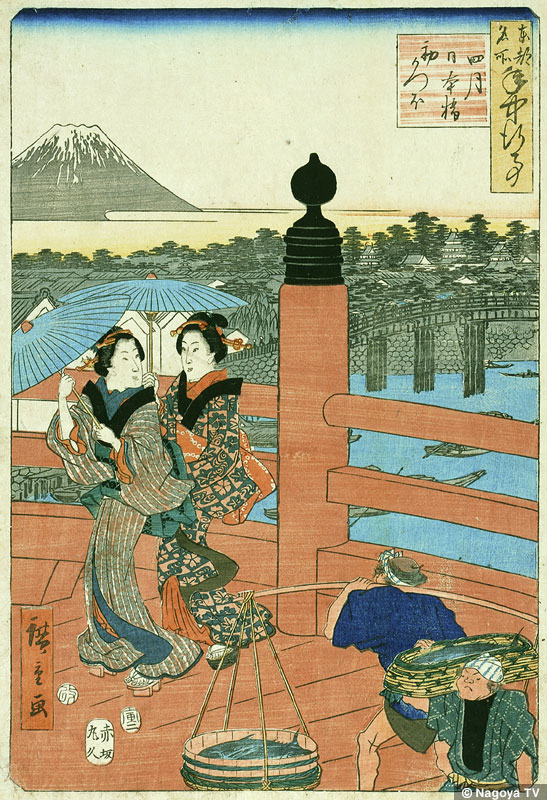
4.東都各所年中行事 四月(日本橋初かつお
April (the first bonito catch from Nihonbashi bridge), from the series: "Annual events and sights of interest in Edo"
旧暦4月は、新緑美しい、初鰹の季節である。近くに魚河岸のある日本橋の上、仕込れた鰹を運ぶのに出会った様子である。画面右上は江戸城、左上はもちろん富士山。
April of the lunar calendar is the month of the vivid and delicious first bonito catch.
This is on the Nihonbashi Bridge, near a fish market, acquaintances have met while the bonito are being delivered. In the top right of the print is Edo Castle, and needless to say, in the top left is Mt. Fuji.
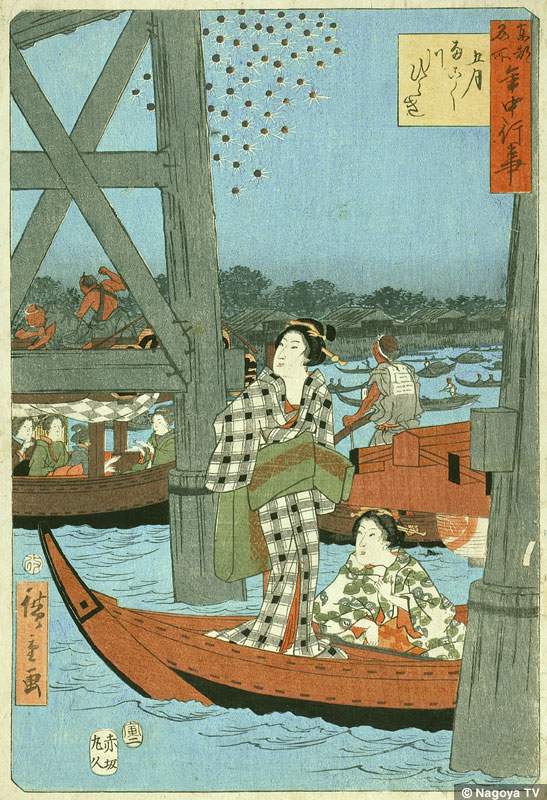
5.東都名所年中行事 五月(両こく川ひらき)
May (The Ryogoku river festival), from the series: "Annual events and sights of interest in Edo"
両国界隈は江戸一番の繁華街。特に旧暦5月28日から三ヶ月間、夜店が出て花火も打ち上げられ、多くの人を集めた。初日の川開きは、本格的な夏の到来を告げる江戸の風物詩であった。
The neighborhood of Ryogoku was the greatest entertainment district of Edo. Beginning with May 28 of the lunar calendar, the following three months would especially attract crowds because night stalls would come out and shoot fireworks. The first day of the river festival signaled the coming of Summer.
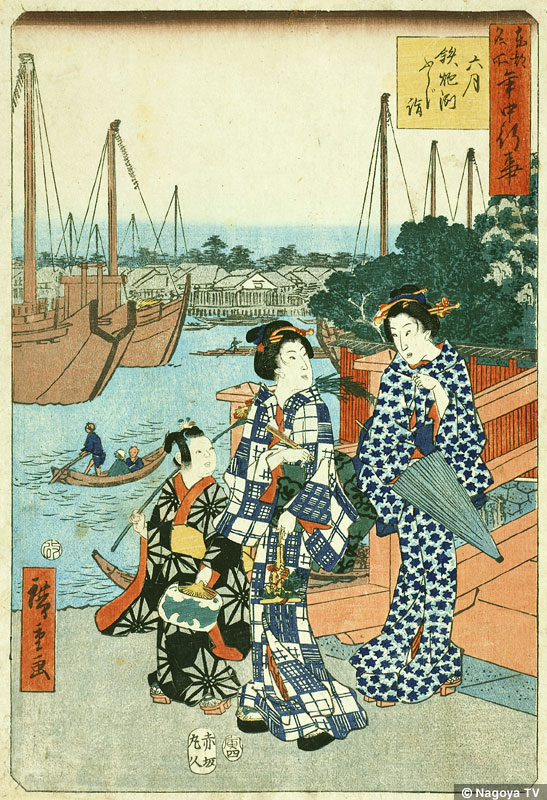
6.東都名所年中行事 六月(鉄砲州ふじ詣)
June (Visiting the Teppozu wisteria), from the series: "Annual events and sights of interest in Edo"
藤の花は旧暦6月の風物詩。鉄砲州は、今の東京都中央区、隅田川西岸にあり、佃島を対岸に見る出洲である。
The wisteria is the seasonal symbol of June of the lunar calendar. Teppozu is around the west bank of the Sumidagawa River in present day Chuo district in Tokyo, and is a protruding bank that faces Tsukuda-jima.
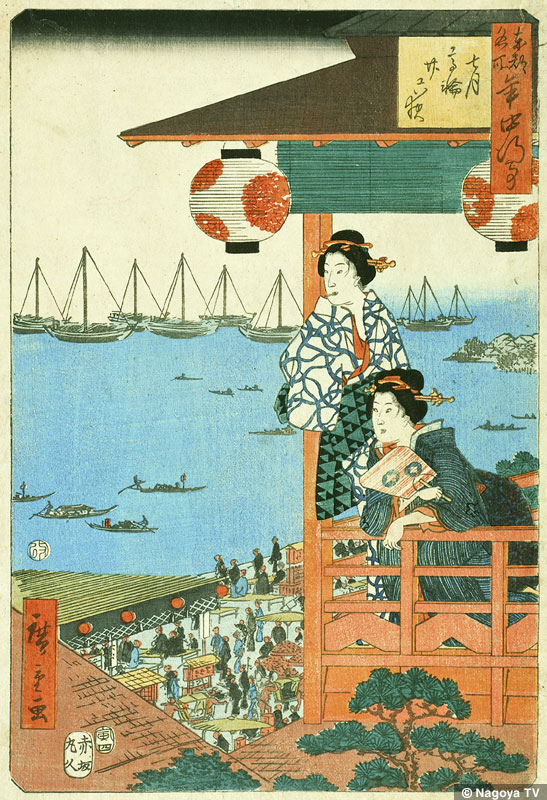
7.東都名所年中行事 七月(高輪廿六夜)
July (Night of 26th, Takanawa), from the series: "Annual events and sights of interest in Edo"
二十六夜待(にじゅうろくやまち)は、旧暦の正月と7月26日の夜、月の出るのを待って拝すること。江戸では高輪、品川で盛んであった。明け方近い時間であるが、大勢の人が出ている。
"The Twenty-Sixth-Night-Wait" was on the night of the 26th of January and July of the lunar calendar where people would wait for the moon rise to worship it. In Edo, Takanawa and Shinagawa were very active. Although it was at the break of dawn, many people are out.
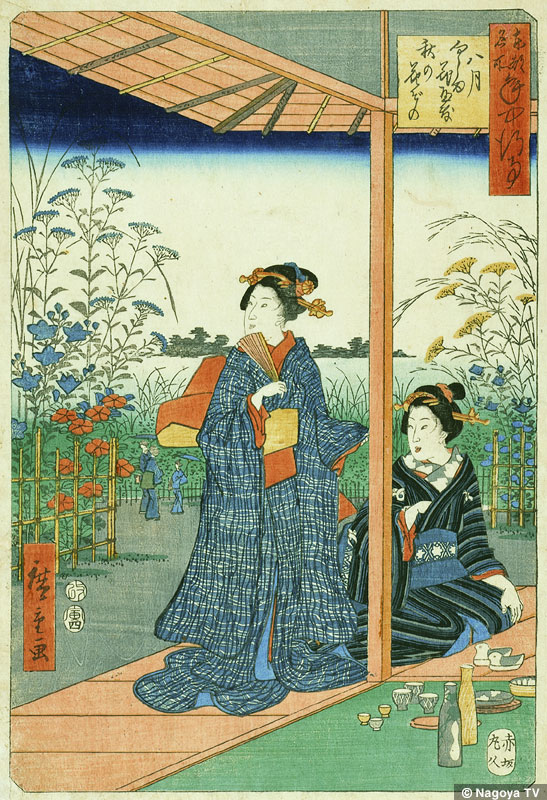
8.東都名所年中行事 八月(向しま花屋敷秋の花ぞの)
August (The autumn flower garden in Muko-jinna), from the series: "Annual events and sights of interest in Edo"
向島は隅田川岸の浅草の対岸の一帯である。春の花見が有名だが、花屋敷こと百花園の秋の草花は有名。もっとも花見や行楽は酒宴の口実である場合が多かったようだが。
Muko-jima is the stretch of Asakusa on the east bank of the Sumidagawa River. It was famous for cherry blossom viewing in the spring, but was also well known for the autumnal flowering grasses of Hyakkaen. But apparently such cherry blossom viewing and excursions were an excuse for drinking parties.
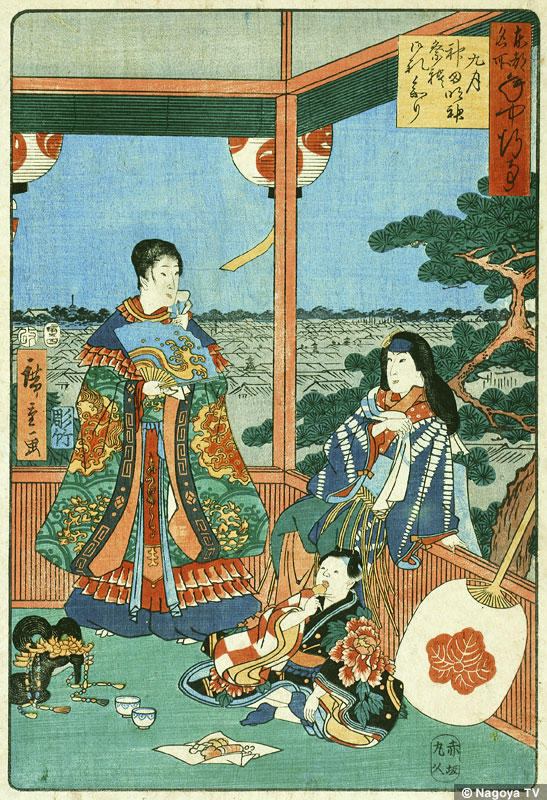
9.東都名所年中行事 九月(神田明神祭礼御礼参り)
September (Kanda Myoujin festival prayers), from the series: "Annual events and sights of interest in Edo"
湯島台地東端にある神田大明神では、一年おきの9月15日に例祭がおこなわれた。天下祭といわれるほどに盛大であった。祭りの後の様子か。それぞれに役目を終えた人々の表情が面白い。
At the eastern edge of the Yushima highlands was the Kanda Daimyojin, an all powerful deity, where an annual celebration every other year was held on September 15.
It appears to be a scene from after the festival.
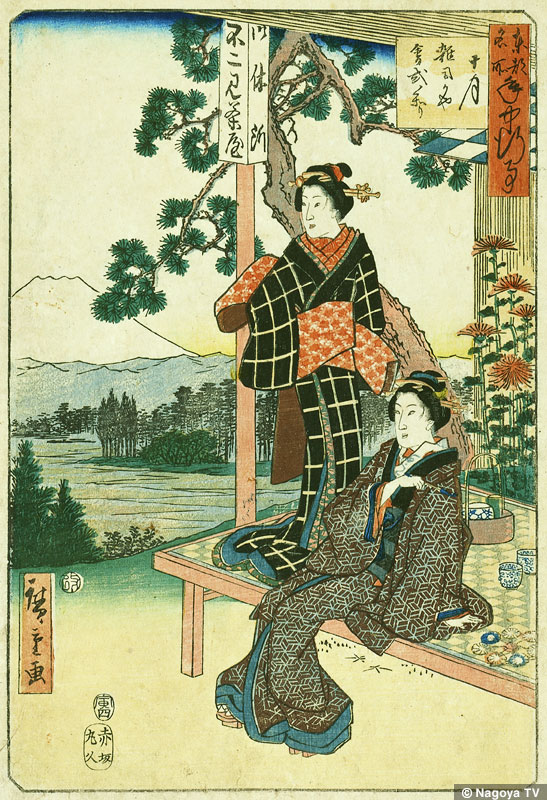
10.東都名所年中行事 十月(雑司かや会式参り)
October (Paying a visit to Zoshigaya memorial service), from the series: "Annual events and sights of interest in Edo"
南池袋の雑司ヶ谷鬼子母神(日蓮宗法明寺)で、毎年10月13日(祖師日蓮の命日)におこなわれる会式(えしき)に参る途中、雑司ヶ谷の不二見茶屋での休憩のようすである。
They are on their way to the annual memorial service on October 13 (the day of the death of the founder of Nichiren Buddhism) to Kishibojin (The Goddess of Children of the Nichiren Homyo-ji Temple) in Zoshigaya of south Ikebukuro. They seem to be taking a rest at the Fujimi tea shop in Zoshigaya.
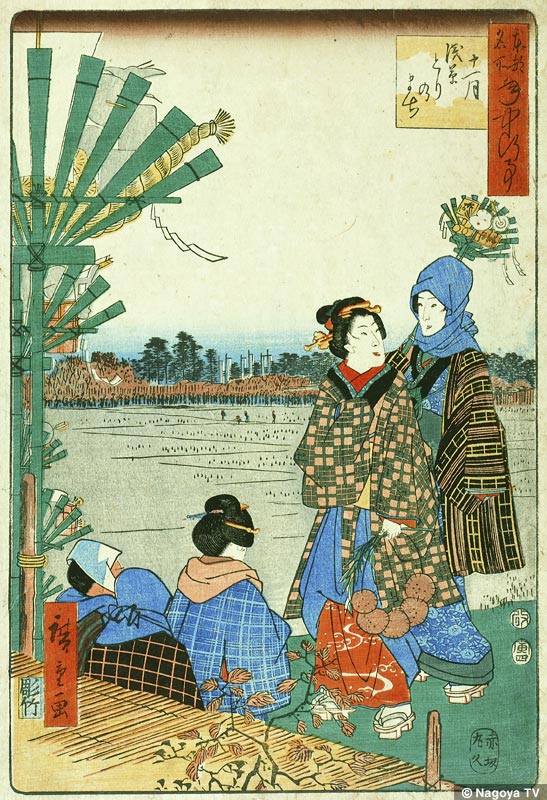
11.東都名所年中行事 十一月(浅草とりのまち)
November (The Asakusa rooster fair), from the series: "Annual events and sights of interest in Edo"
「とりのまち」は東京下谷の鷲(おおとり)神社で、毎年11月の酉の日に行われる祭。近くには市が立ち、縁起物の熊手を買う人の列で大にぎわいである。
The "Rooster Fair" is a festival that is held every November on the day of the rooster at the Ootori Shrine in Shitaya, Tokyo. A city has gone up nearby and there is a line of bustling people waiting to buy the bamboo rake, a good luck charm.
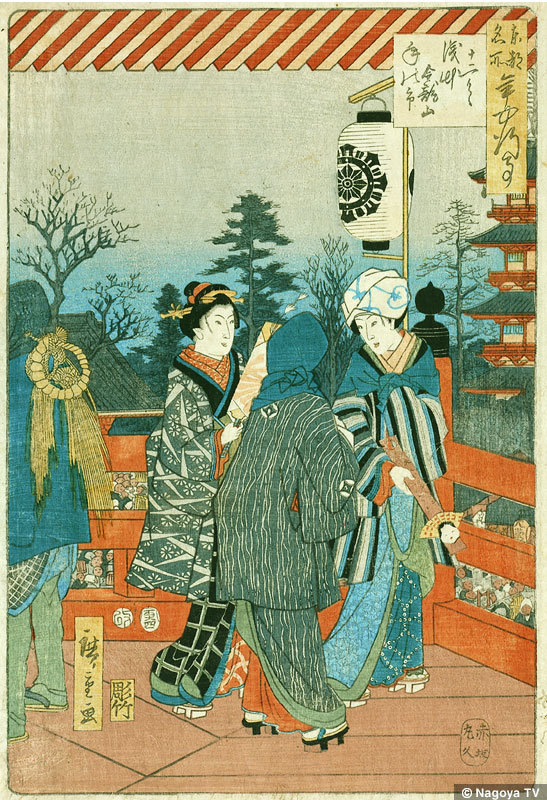
12.東都名所年中行事 十二月(浅草金龍山年の市)
December (Asakusa Kinryuzan year-end fair), from the series: "Annual events and sights of interest in Edo"
何となくせわしない年の瀬、それでも浅草の門前市に出かけ、新年の飾り物などを買わなければ年は越せないものであった。
It always seems to be busy around the end of the year, but the new year could not be welcomed in without going out to Monzen market in Asakusa to buy new years ornaments.
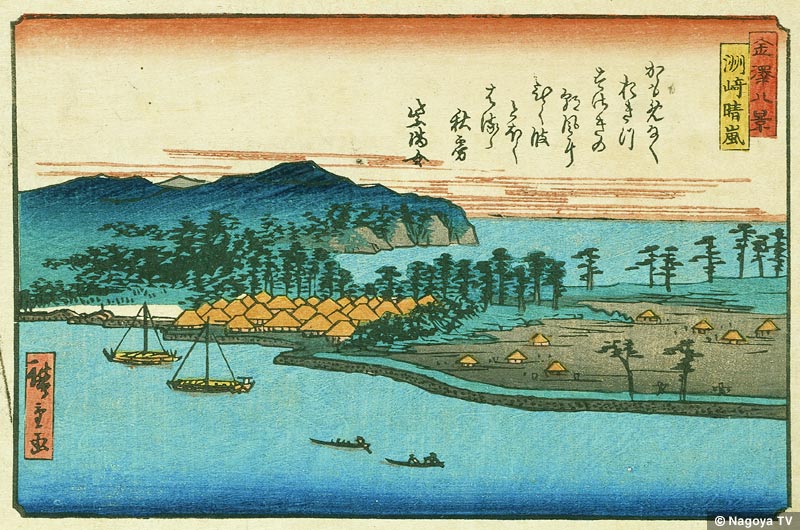
13.金沢八景 州崎晴嵐
Fine weather in Suzaki, from the series: "Eight views of Kanazawa"
中国の瀟湘八景を日本各地の景勝地にあてはめ各地に「八景」が作られた。金沢八景は神奈川県。晴嵐(せいらん)は強い日差しを描くことが多い。
Scenic spots from all over Japan were applied to the "Eight Views of Shoushou" from China, thus creating the "Eight Views" of Japan. The "Eight Views of Kanazawa" are from Kanagawa prefecture. Beautiful days are often portrayed with strong sun light.
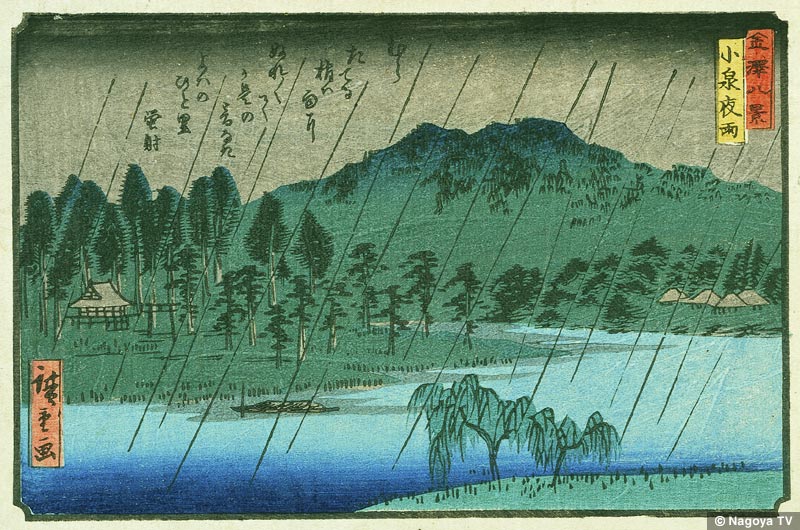
14.金沢八景 小泉夜雨
Rain shower at dusk, from the series: "Eight views of Kanazawa"
広重の描く雨の景は、どんな場合にも一定以上の情感をたたえている。粗い雨脚のさざなみなど。タ闇迫る頃の雨の風情をうまくとらえている。
In every case, the depictions of Hiroshige's rain scenes have an overflowing amount of emotions. The appearance of the rain in the shadows of dusk is well portrayed, such as the coarse rain shower and the ripples on the surface.
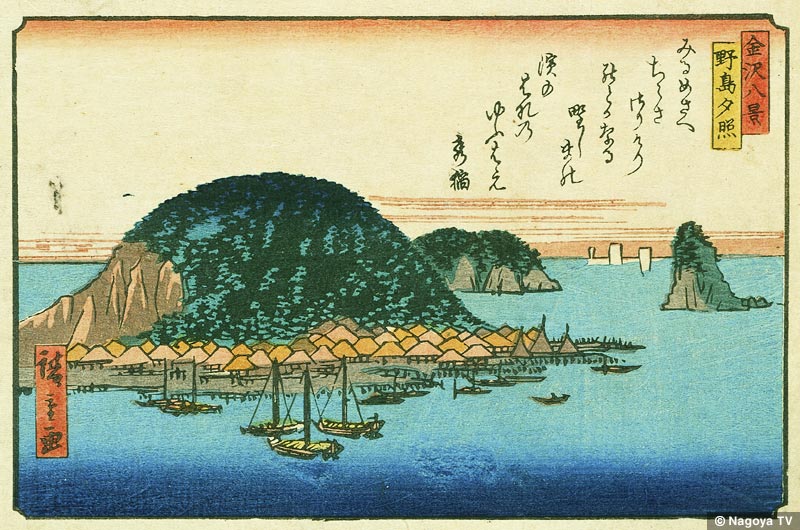
15.金沢八景 野島夕照
Nojima evening light, from the series: "Eight views of Kanazawa"
「タ照」は、文字通りタ方の景、タ映えである。 舟はすっかり帆を降ろし、平和で静かな夕暮れをイメージさせてくれる。
"Evening Light," just like it is written, is a scene of the evening, an evening glow. The boats have lowered their sails, creating the image of a quiet and peaceful evening.
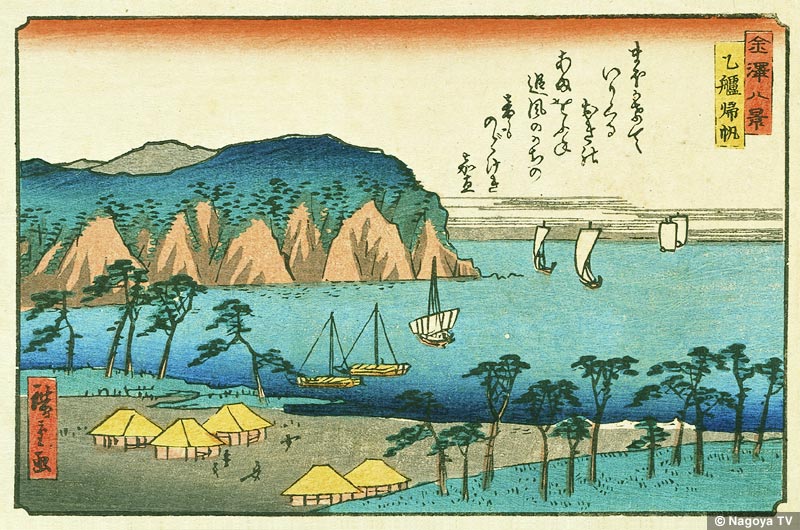
16.金沢八景 乙艫帰帆
Boat return at Otsutomo, from the series: "Eight views of Kanazawa"
タ方になって、漁に出ていた舟が港に帰ってくるのが「帰帆(きはん)」。浜辺では船を待つ人であろうか、豆粒ほどに人物が描かれる。
In the evening, the boats return to the port from fishing, which is known as "boat return." On the beach are probably people waiting for the boats. They are drawn as the size of a pea.
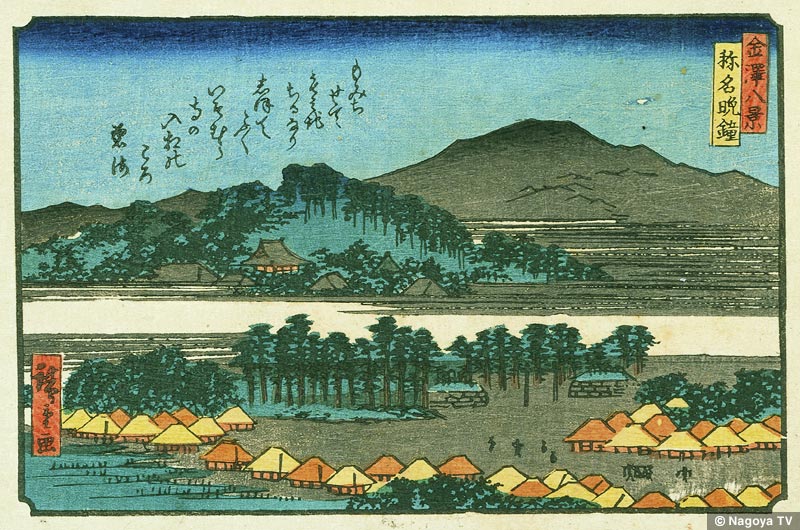
17.金沢八景 称名晩鐘
Shomyou Bansho, from the series: "Eight views of Kanazawa"
金沢文庫はもとは称名寺にあった。「晩鐘」は、夕暮れの鐘の音。寺の鐘がゴーンと響いてくれば、もうこれは郷愁を誘う以外なにものでもない。
The Kanazawa Library was originally in Shomyo-ji Temple. "Bansho" is the evening bell. When the temple bells sound, it brings back nostalgic memories.
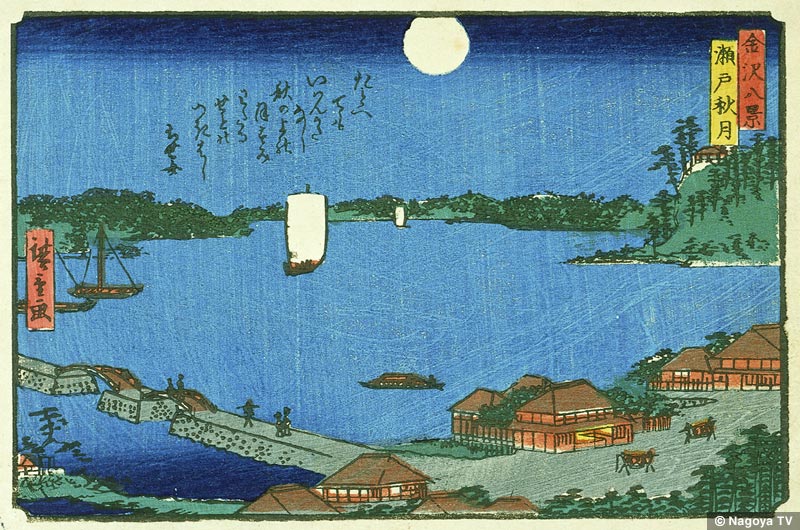
18.金沢八景 瀬戸秋月
The Seto autumn moon, from the series: "Eight views of Kanazawa"
満月の夜である。月見の人の姿も見える。 「・・・・・・秋の夜の月澄みわたる瀬戸の月橋」 という歌意そのままの景である。
It is the night of a full moon. Figures of people can be seen looking at the moon. It captures the true imagery from the verse "The autumn moon rising crossing high on the Seto moon bridge."
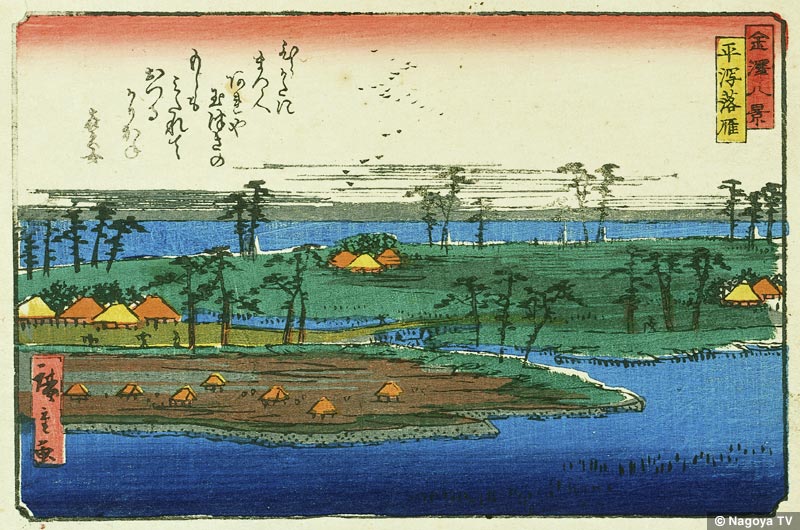
19.金沢八景 平潟落雁
Falling geese in Hirakata, from the series: "Eight views of Kanazawa"
雁が群れをなして降り来る様子が「落雁」である。手前にある人気のない浜が寂しさをいっそうつのらせる。
The illustration of the flock of geese coming down to land are the "falling geese". The hill in the front without any sign of life makes the loneliness even greater.
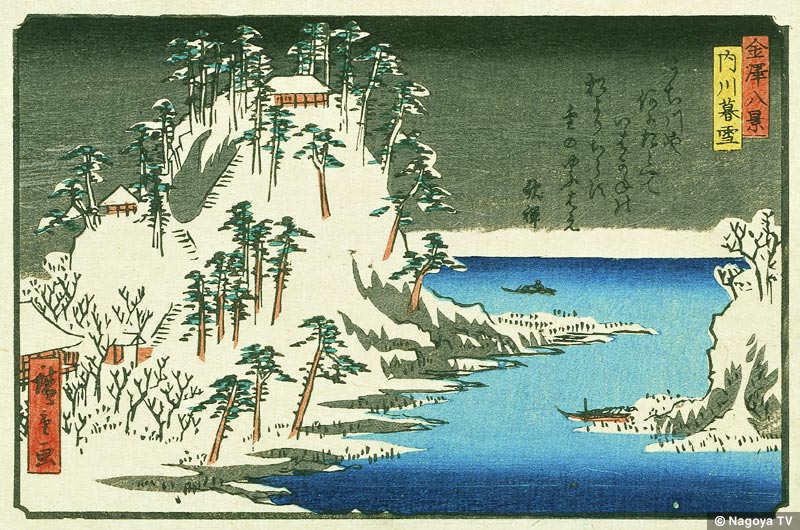
20.金沢八景 内川暮雪
Nighttime snow in Uchikawa, from the series: "Eight views of Kanazawa"
音もなく降りくる雪。いつの間にか積もってしまう夜の雪。広重の描く夜の景は、見るもののイマジネーションを刺激する。
Snow falling silently. Nighttime snow that accumulates before you know it. Hiroshige's night scenes stimulates the imagination of any viewer.




